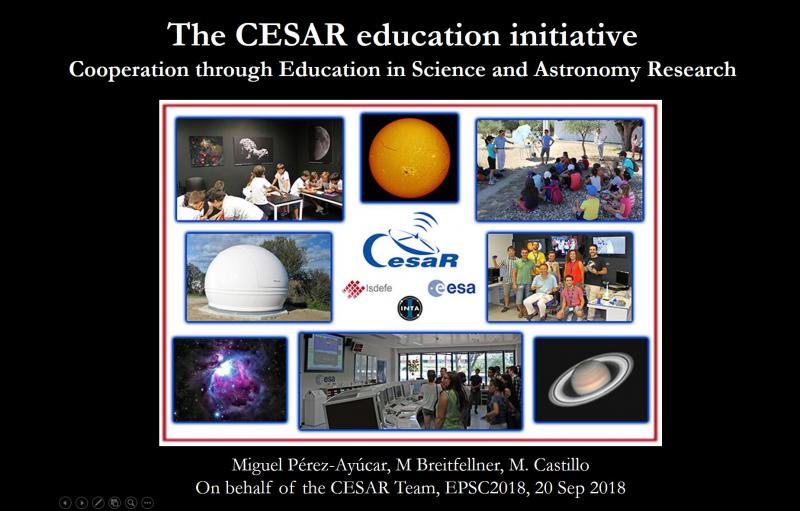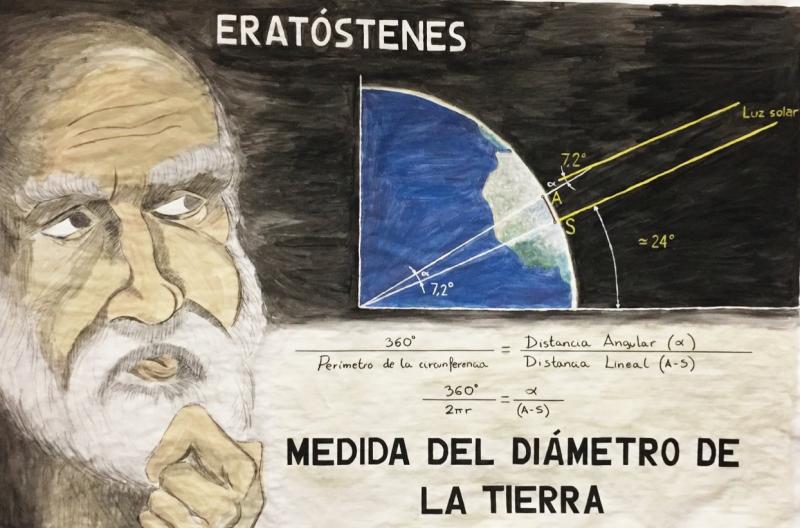| |
|
| |
|
| |
|
| |
|
| |
|
 |
CESAR at EPSC 2018 (en)
CESAR presenter its activities and Mercury Transits at the European Planetary Science Conference EPSC 2018, held 17-21 Sep 2017 in Berlin, Germany. Leer más |
|
|
 |
Eratosthenes Experiment 2018 (en)
The CESAR team organized a special experimental activity about the classical Earth’s diameter calculation, with the Caude School of Majadahonda, Madrid and IES Manuel de Falla, Maracena, Granada. The 1-2 ESO students (12-14 years old) learnt how in 200 BC, the Greek mathematician Eratosthenes calculated the circumference of the Earth using simple geometry and a few measurements. Leer más |
|
|
|
|
 |
The Sun in 2017 (en)
The Sun in 2017 as seen by the CESAR Helios Observatory located at ESAC, Madrid. The posters compile in a calendar form a sample of the images acquired during each day in 2017. Other highlights of 2017 are also shown. Leer más |
|
|
|
| |
|
| |
|
| |
|
|